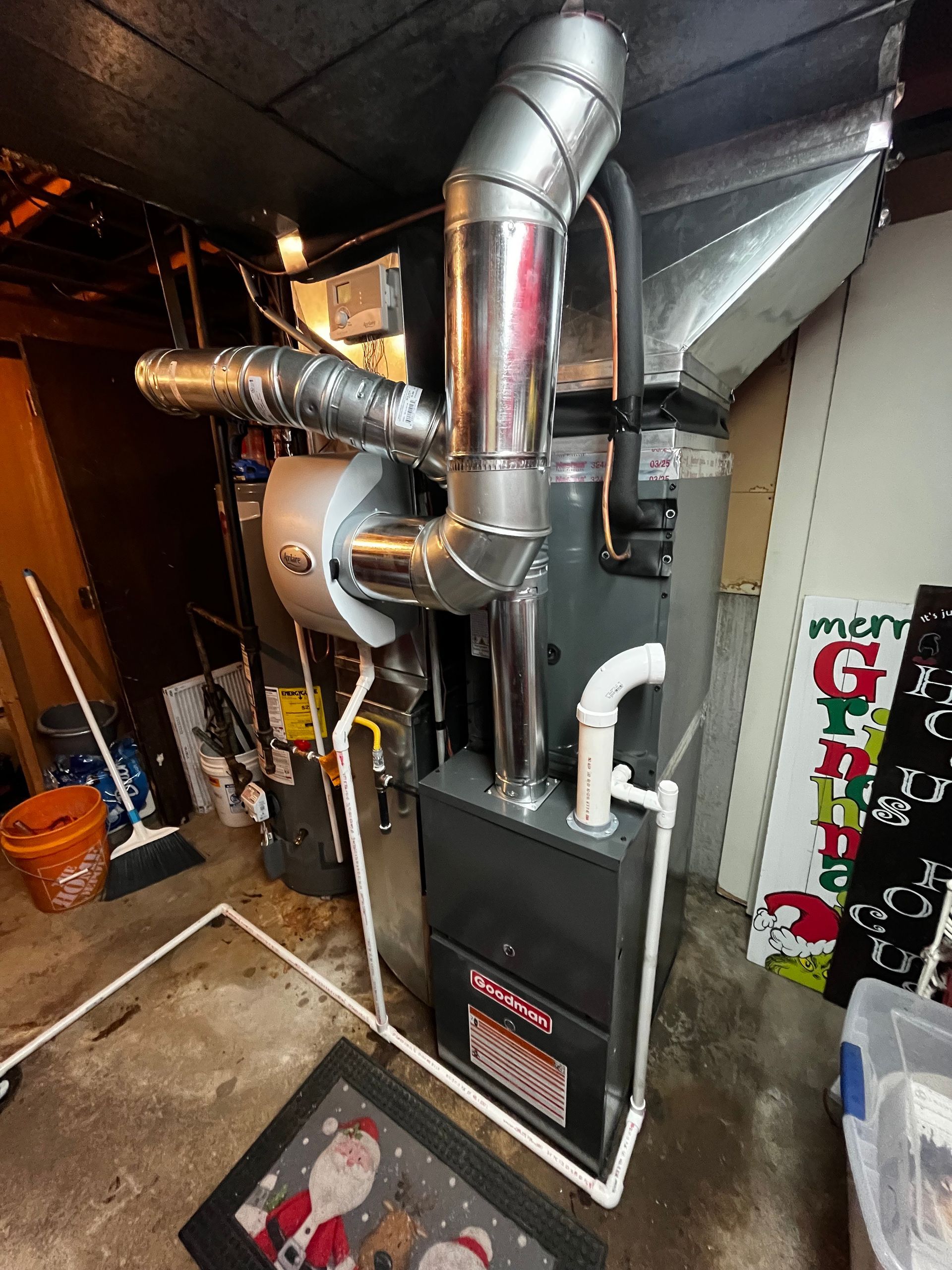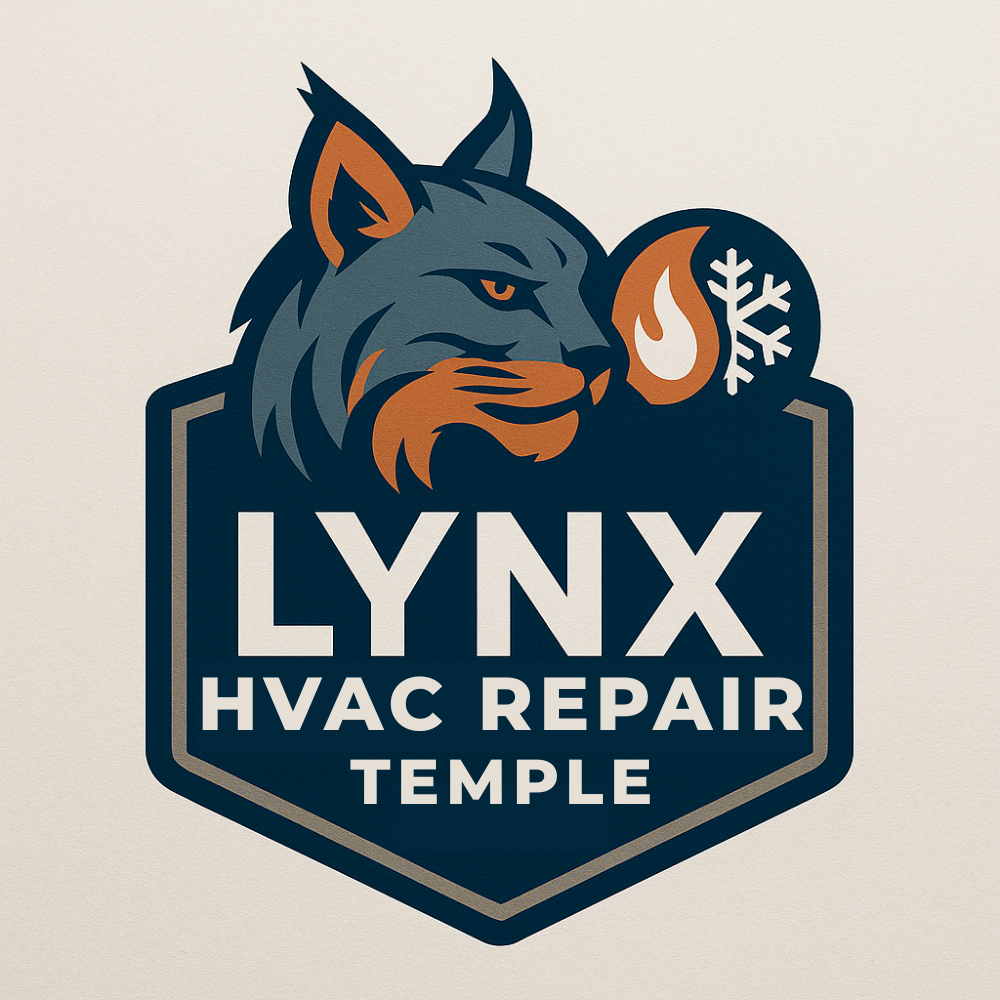Soundproof Air Vent Cover: The Ultimate DIY Guide for a Quieter Home
Homeowners often find that even with solid walls and doors, noise sneaks through air vents. Whether it’s a loud HVAC system in need of ac repair or voices traveling room-to-room, an air vent can act like an open highway for sound. In this guide, we’ll explore how a soundproof air vent cover can help solve these noise issues. We’ll cover unique tips that competitors overlook, DIY instructions that are beginner-friendly, and important considerations so you can enjoy a quieter home. (And don’t worry – we’ll also make sure you don’t accidentally mess up your HVAC in the process!)
Why Do Air Vents Let Noise Through?
Air vents create openings that sound can easily travel through – a phenomenon known as flanking noise (sound taking an indirect path). Several factors affect how much noise comes through a vent:
- Vent Shape and Path: A straight vent or duct acts like a megaphone for sound. Without any twists or turns, noise travels unobstructed into the room. In contrast, vents or ducts with bends and turns can dampen noise – each 90° turn can reduce sound by about 6 dB by forcing sound waves to reflect and lose energy along the way.
- Vent Material: Many home vents and ducts are made of metal, which is a hard, reflective surface. Sound bounces off metal easily, amplifying noise rather than absorbing it. A metal duct with no insulation will carry voices or the whoosh of air far and wide. If the vent interior is lined with softer or insulated material, it can absorb some of that sound.
- Vent Size and Length: A short path from one room to another (as in back-to-back wall vents or a straight duct between rooms) means there’s little opportunity for sound to diminish. Longer ducts give more distance for sound to fade or be absorbed – especially if they have those bends or are lined with insulation.
Bottom line: Vents are essentially holes between rooms (or between indoors and outdoors), so they need special treatment to prevent them from acting like echo chambers. Next, we’ll dive into practical steps to fix noisy vents.

Start with the Basics: Quick Fixes for Noisy Vents
Before adding fancy soundproofing, check for simple issues that might be causing or worsening the noise:
- Blocked or Closed Vents: Ensure the vent isn’t partially blocked by furniture, debris, or a closed damper. Obstructions can cause pressure build-up and whistling or rattling noises. Simply clearing the blockage or fully opening the vent may reduce noise.
- Dirty or Old Filters: If the noise is a loud airflow “whoosh”, a clogged air filter could be forcing air noisily through the ducts. Replace HVAC filters every ~90 days to keep airflow smooth and quiet.
- Loose Grilles or Parts: The metal vent cover (grille) or duct parts might rattle. Gently tighten any loose screws. You can also apply a bit of foam weatherstrip tape around the vent frame to create a tighter, vibration-free fit.
- HVAC System Issues: A loud humming or rumbling could indicate something in the HVAC system itself (like a blower motor issue) that sends noise into vents. If you suspect this, you might need a professional to service the HVAC unit – soundproofing the vent won’t help much if the furnace or AC is roaring away.
Taking care of these basics can sometimes quiet things down enough. But if you still have unwanted noise coming through, it’s time to look at soundproofing solutions.
DIY Soundproof Air Vent Cover Solutions
Now we get to the core solutions: ways to actually soundproof the air vent. We’ll start from simpler fixes and work up to more involved projects. These methods will help block or dampen sound traveling through vents – and we’ll note which ones still allow airflow (for ventilation) versus those that block it completely.
1. Cover the Vent Opening with a Soundproof Cover (Easy Method)
One of the quickest ways to stop noise through a vent is to cover the vent opening on the room side. By sealing it off, you’re essentially plugging the hole that sound is coming through. Here are a couple of approaches:
- Magnetic Vent Covers: These are flexible magnetic sheets you can cut to size and stick over metal vent grilles. They are inexpensive and easy to apply (they snap right onto the metal vent face). By blocking the vent, they also block the noise and airflow. This is great for a quick noise fix or for vents in rooms you rarely use. Tip: If your vent grill is not steel (some older or plastic ones aren’t magnetic), you can use velcro or painter’s tape to secure a sheet of heavy vinyl or even a thick poster board over the vent as a temporary test. The effect is the same: you’re closing the vent.
- Thick DIY Cover (MDF or Drywall): For a more permanent solution, you can screw a piece of heavy board (like MDF or even drywall) over the vent opening. This adds mass and seals the opening. If you go this route, seal the edges with acoustical caulk so no gaps remain, since sound can leak through tiny cracks. You can even attach two layers of board with a damping compound (like Green Glue) in between for extra sound blocking. The downside is you’ll have an obviously covered vent – some homeowners will paint it to match the wall for a cleaner look.
Remember ventilation: Covering a vent will quiet the noise but also stops airflow from that vent completely. If this is a bedroom or living area, consider that it might get warmer in summer without AC air coming in, or feel stuffy due to a lack of fresh air. If you have alternative ventilation (another vent, a window, or a fan in the room), this might be fine. In fact, closing off a couple of vents in seldom-used rooms can even improve overall HVAC efficiency by directing air to the rooms you do use. Just avoid covering too many vents at once—most experts, including professionals who provide Temple AC repair services, recommend not blocking more than one or two vents in your home. Blocking more can create pressure buildup in your ducts, which may lead to leaks or reduced HVAC performance. If you use a magnetic or temporary cover, remove it periodically to allow air circulation and help prevent moisture or mold buildup inside the sealed vent.
2. Plug the Vent with Acoustic Foam or Insulation
If you want something a bit more targeted than covering the entire vent face, you can create a plug that fits into the vent duct just behind the grille. This approach lets you hide the sound-blocking material inside the vent, which can be aesthetically nicer (the vent looks normal from the outside).
One simple DIY is using acoustic foam. Acoustic foam panels (the kind used in studios or even foam cushions) are good at absorbing sound. Here’s how you can use them:
- Cut foam to size: Remove your vent grille and measure the opening. Cut one or two pieces of thick acoustic foam slightly larger than the opening so they fit snugly. Often two layers are used (for extra thickness) – cut them and then glue them together with spray adhesive.
- Insert the foam plug: Press the foam into the duct so it sits just behind where the grille was. The friction or a gentle compression fit should hold it in place (you can also use a few pieces of double-sided tape or velcro if needed). Now reattach the vent grille over it. The foam will absorb and dampen sound traveling through the vent, essentially trapping noise before it enters the room.
This method blocks most airflow similar to a cover, though if you use an open-cell acoustic foam, a tiny bit of air might still pass (not enough for real ventilation). You’ll get a big drop in sound because the foam both reflects and absorbs the noise. Just make sure the foam fills the space without large gaps on the sides – use acoustic caulk or weatherstripping around the edges if needed to ensure an airtight (and sound-tight) seal.
DIY Alternative: Don’t have specialized acoustic foam? You can improvise a vent plug with common materials. For example, old pillows, towels, or fiberglass insulation can work as the core sound absorber if properly packed. One clever trick from a DIY forum is to make a giant “earplug” for your vent: take a plastic garbage bag and fill it with fiberglass insulation or rags, tie it off, compress it and shove it into the vent, then let it expand to plug the duct. This creates a dense, removable plug that blocks noise completely. Here’s a quick rundown of that process:
- Remove the grille so you have open access to the duct opening.
- Fill a plastic bag with soft insulation material – unfaced fiberglass batt works great, or use a bunch of old towels/rags. Pack enough to make a bundle larger than the vent opening (about 50% larger in diameter is a rule of thumb). Tie or tape the bag shut.
- Compress and insert this bag into the vent. Push it in far enough that it’s fully inside the duct. When you let go, it will gently expand and wedge itself in, sealing the duct tightly and muffling sound (just like a foam earplug expands in your ear).
- Replace the vent cover. You won’t see the bag; it’s hidden behind the grille. If you ever need to remove it (say, to restore ventilation), just take the grille off and pull the bag out. (Cut a slit in the bag to release air and make it easier to pull out if it’s really snug.)
This “bag of insulation” method is cheap and very effective for sound, acting almost like a professional-grade sound plug. Again, use it only if you don’t need that vent for air – it’s effectively blocking it 100%. It’s a great option for, say, a vent between an apartment and a neighbor’s unit, or a vent in a room you’re soundproofing for recording, etc., where silence is the goal.
3. Line the Duct Interior with Sound Absorbing Material
What if you do need to keep the vent open for airflow, but still want to reduce noise? In that case, consider lining the inside of the vent or duct with sound-absorbing material instead of blocking it entirely. This approach will absorb a lot of the noise traveling through while still allowing air to pass (though it might slightly reduce the duct diameter).
A common material for this is acoustic duct liner – basically insulation made for lining HVAC ducts. For example, adhesive foam panels or specialty liners can be cut and stuck to the inside walls of the duct. Fiberglass duct liner is often used in professional installations (it usually has a protective facing so fibers don’t blow into the room), but for a DIY fix, many homeowners use foil-faced foam or mass-loaded vinyl. Even a product like Reflectix (foil-faced bubble wrap insulation) can help dampen sound in a pinch.
To install a duct liner:
- Remove the vent cover and reach into the duct. Measure how deep you can line it (even lining the first 2–3 feet can make a difference).
- Cut pieces of your liner material to fit the top, bottom, and sides of the duct interior. Adhere them with appropriate glue or tape (many duct liners are peel-and-stick, or you can use construction adhesive rated for HVAC use). Ensure the adhesive and material are safe for HVAC temperatures.
- The liner will absorb sound reflections inside the metal duct, muffling the noise before it reaches the vent opening. It’s especially effective against airflow noise (like that loud whooshing), and also helps with voices or sound coming through from other rooms by softening the path.
One inexpensive DIY liner option is a foam mat or mass loaded vinyl (MLV) cut to size. In fact, there are kits available that include a combination of a foam sheet and a dense vinyl that you can attach inside or over a vent to dampen sound. These materials add a bit of mass to block sound and also absorb vibration. Wrapping the exterior is tougher in finished walls, but if you have access (say, an unfinished basement ceiling), adding a layer of MLV or a dense rubber material around the duct can further contain sound.
The key with liners is coverage – the more of the metal surface you cover, the more sound you’ll absorb. Just be sure not to block airflow significantly. Most liners are only 1–2 inches thick at most. And if using fiberglass-based products, get the kind with a sealed face or add a layer of fabric over it, so you’re not blowing itch-inducing fibers into your rooms!
4. Add Bends or a DIY Sound Maze (Maintaining Airflow)
As mentioned earlier, introducing bends or turns in the vent’s path can dramatically cut down noise. If your noisy vent is connected via a straight duct, you might reduce sound by modifying it into a more labyrinthine path. This isn’t always easy (it might involve accessing ductwork in the attic or walls), but here are a couple of ideas:
- Flexible Duct Replacement: If feasible, replace a short straight section of duct with an insulated flexible duct of the same diameter. The flexible duct’s curves can disrupt sound travel – every time sound hits a bend, some of it is absorbed or reflected in a different direction. Do keep the run as short as needed and properly support it. Also, use a quality flex duct with no holes or tears; cheap flex ducts can develop leaks that let sound out (and reduce HVAC efficiency). This method is often used when people want to quiet down a specific air vent without a major remodel – it’s a moderate DIY project if you can access the ducts. Just remember that flex duct, if very long or thin, can reduce your airflow a bit, so don’t go overboard with excessive length or coils.
- Build a Sound Baffle (“Dead Vent”): A more advanced DIY solution, typically used in home theaters or recording studios, is to create a baffle box or “dead vent” for the duct. In simple terms, this is a box lined with acoustic material that forces the air (and sound) through a maze-like path. By the time the air navigates the maze, most of the sound is absorbed in the walls of the box. You can build a 3- or 4-sided plywood box around the vent duct (e.g., in an attic or closet space), line the inside with acoustic foam, and design it so the duct goes through a couple of right-angle turns inside the box. This essentially combines the benefits of bends and absorption. It’s analogous to a car muffler but for your vent – as sound travels through the convoluted path, it loses energy in the foam and boards. When done right, a baffle can greatly reduce noise coming out of the vent. In fact, one source noted that adding a flexible duct inside such a baffled box (to add even more twists) made the vent nearly silent.
That said, baffle boxes are not usually necessary for a typical home and do require some carpentry skills. They also need space – you might need a large box to be truly effective. Also, note: baffles work best for longer HVAC ducts that have room for that maze. If you’re trying to quiet a simple short vent (like those small vents above a door, or a 6-inch wall vent straight through to another room), a big baffle may not perform well because there’s just not enough length for sound to be absorbed. In such cases, you’re usually better off with the simpler cover or plug methods above.
5. When All Else Fails: Upgrade or Professional Solutions
If you’ve tried DIY measures and the vent noise is still a problem, you might need to tackle it from a different angle:
- Upgrade Noisy Equipment: Sometimes the issue isn’t the vent itself but the old clunky HVAC unit roaring away and sending noise through the ducts. Modern HVAC systems are often designed to be quieter. If your furnace or blower is very old, consider if an upgrade is feasible – it could reduce noise at the source and save energy. This is a costly solution but in some cases the most effective for overall home noise reduction.
- Inline Duct Silencers: There are specialized products (used in commercial buildings or luxury homes) like return air silencers or duct mufflers. These are pre-made baffle units that install in line with ductwork to absorb sound. Installing one typically isn’t a simple DIY unless you have access to the ducts and some HVAC skills – but an HVAC professional or dedicated soundproofing company could add these. They are basically the professional version of the DIY baffle we described, compact and engineered for airflow and noise reduction.
- Consult a Professional: If you’re dealing with significant noise (say, you converted a room to a home office or studio and noise through vents is a serious issue), consulting a soundproofing expert or HVAC pro might be worth it. They can assess if, for example, ductwork rerouting or adding internal dampers or changing the return grille will help. It’s more expensive, but they can recommend the best solution for your specific situation. Sometimes a combination of methods is needed – an expert might line your ducts, install a short muffler section, and ensure all vent connections are properly sealed.
Bonus: Don’t Forget Exterior Vents and Openings
Most of this article has focused on HVAC vents inside the home. But some homeowners are bothered by noise coming through exterior vents or openings, like crawl space vents or foundation vents. These are the slotted vents often found in the foundation walls that allow air circulation under the house. They can also let in a lot of outside noise (traffic, lawn mowers, kids playing, etc.), because they’re basically holes to the outside. If you live in a noisy neighborhood, consider investing in soundproof covers for those exterior vents as well. High-quality foundation vent covers (often made of thick, durable materials) can block noise from entering through the crawl space, which in turn means a quieter floor and less noise seeping up into your living space. As a bonus, these covers can help with insulation – keeping cold drafts out in winter and hot air out in summer. Just ensure that if you close off crawl space vents for soundproofing or energy reasons, your home still has proper moisture control or alternate ventilation in the crawl space to avoid humidity issues.
Final Tips for a Quieter Vent (and Home)
Achieving a quieter home with a soundproof air vent cover (or any of the methods above) is absolutely doable as a DIY project. To recap the key points:
- Identify the Noise Source: Is it purely noise through the vent (voices, music, outside sounds), or noise generated by the vent (airflow whoosh or rattling)? This will guide whether you simply block the vent or also need to address the HVAC system or ductwork.
- Start Simple: Begin with easy, reversible fixes like magnetic covers or foam plugs in one or two problem vents. See how it impacts noise and room comfort. These solutions are cheap and you can always remove them if you need the vent open again.
- Mind Ventilation Needs: Always weigh noise reduction against the need for air circulation. It’s okay to silence a vent in a closet or rarely-used guest room. But for occupied rooms, consider partial measures like lining ducts or using a slimmer foam insert if completely blocking the vent makes the room too stuffy or warm.
- Seal the Gaps: Small gaps equal big sound leaks. Use acoustic caulk or weatherstripping to seal around vent perimeters, duct joints, or any hole where sound can sneak through. This often-overlooked step can improve the performance of any soundproofing method you choose.
- Be Cautious with HVAC System Effects: If you cover or plug vents, do it in moderation. As noted, covering many vents can upset the pressure balance of your HVAC system. Also, never block intake vents or returns that your system needs for airflow – focus on vents that won’t compromise the system’s function or safety.
- Consider Professional Help for Complex Issues: There’s no shame in calling a pro if, for example, you need to reduce noise but can’t sacrifice ventilation. Solutions like custom duct baffles, upgraded return air silencers, or reworking duct routes might be best handled by experts.
By using a combination of the above tips, you can create your own soundproofed vent covers and enjoy a significantly quieter home. This comprehensive approach – from quick DIY fixes to deeper modifications – will not only tackle the noise that current competitors talk about, but also cover the less obvious angles (like vent maintenance, exterior noise, and advanced solutions). A quiet, peaceful sanctuary is within reach, and you now have a toolbox of methods to achieve it. Here’s to a home where the only thing coming through your vents is comfort – not noise!
References
- Second Skin Audio – How to Reduce HVAC Noise From a Noisy Air Vent
🔗 https://www.secondskinaudio.com/soundproofing/how-to-reduce-hvac-noise - Soundproof Central – 8 Effective Ways to Soundproof Air Vents
🔗 https://soundproofcentral.com/soundproof-air-vents - Soundproof Cow – How to Soundproof HVAC Systems
🔗 https://www.soundproofcow.com/soundproof-hvac-systems - Soundproof Cow – Magnetic Vent Covers & HVAC Efficiency
🔗 https://www.soundproofcow.com/product/magnetic-vent-covers - Soundproof Cow – Using Acoustic Foam for Vent Noise
🔗 https://www.soundproofcow.com/acoustic-foam - DIY Stack Exchange – Reducing sound through a vent (Q&A)
🔗 https://diy.stackexchange.com/questions/2710/reducing-sound-through-a-vent - Second Skin Audio – Mass Loaded Vinyl for Duct Noise
🔗 https://www.secondskinaudio.com/soundproofing/mass-loaded-vinyl - Commercial HVAC Guides – Inline Duct Silencers Overview
🔗 https://www.condair.com/knowledge/hvac-duct-silencers - Vanity Vents – Noise Pollution In Your Home: Tips & Tricks
🔗 https://www.vanityvents.com/blogs/news/noise-pollution-in-your-home
You might also like




